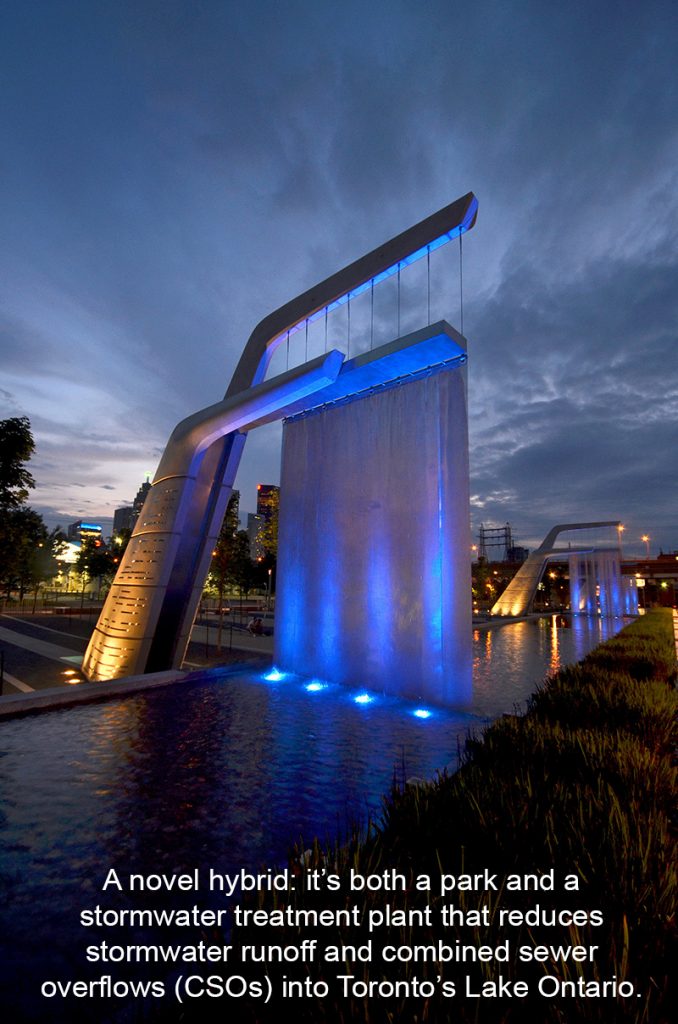Blending Green and Gray

One major issue with current asset management practices is its focus on manmade (gray) infrastructure to the exclusion of green infrastructure. The maturation and strengthening of asset management programs for gray assets provide an opportunity to extend the principles and practices to green infrastructure. For many communities, green infrastructure will be a complement to gray infrastructure rather than a replacement. If systems do not blend both types of assets into a single program, opportunities to use green infrastructure to save money, improve the environment, or increase operational efficiency might be lost, or alternatives using green infrastructure might not be given equal weight by the personnel who oversee water infrastructure. Furthermore, different entities, governmental agencies, or different departments within a community often manage, design, and/or operated green and gray infrastructure. This approach has the negative effect of creating barriers to greater implementation of green infrastructure and might prevent individuals from seeing dual benefits to green or natural projects. Communities and systems must consider the holistic picture of gray and green infrastructure to achieve the greatest financial, environmental, and social benefits from their water infrastructure.
There are a wide variety of definitions for green infrastructure. To effectively implement the SW EFCSouthwest Environmental Finance Center framework, users must know the definitions used for the green and gray assets in the integration process. After discussions with many green infrastructure professionals, the SW EFCSouthwest Environmental Finance Center decided to use the umbrella term “green assets.” Green assets in the framework refer to natural and engineered green assets. Green infrastructure in the framework refers to any practice that uses or replicates the functions of natural systems to achieve the desired outcome and often provides multiple community benefits. Green infrastructure does not exclusively mean vegetation. For example, permeable surfaces are considered green infrastructure because they handle rainfall the same way natural landscapes do. Green assets range in scale from single tree site applications such as stormwater planters or rain gardens to largescale approaches using constructed wetlands or a forested watershed. Gray infrastructure in the framework refers to human-engineered water resource infrastructure made from concrete, plastic, metals, and stone. Gray infrastructure includes pipes, treatment plants, water meters, culverts, pumps, storage tanks, and many others that typically have a single purpose.
The goal of a blended green and gray framework is to enable utilities to make better, more efficient, effective, and environmentally friendly decisions. It will open additional possibilities and move individuals away from the belief that only concrete and steel solutions can work to a more holistic view of the choices. It will provide a more expansive view of the types of alternatives that can yield the desired results and the co-benefits that can be achieved. By considering both approaches together from the beginning, communities can incorporate green infrastructure early enough to potentially reduce the amount of gray infrastructure needed to meet water quality objectives cost-effectively and on schedule. The main intent is to enable the consideration of a full range of choices, so each community can make informed decisions.
A resource is being developed for green assets to assist systems with becoming more familiar with the asset categories, how they work, ease of construction compared one to another, types of maintenance required, maintenance intensity compared one to another, design considerations, benefits, and costs. Systems can use this resource to learn the basics of many different green assets.
Green Asset Resource Database
This green infrastructure database serves as an introduction for those looking to learn more about green and natural assets that are used in water, wastewater, and stormwater systems. It will give users a basic understanding of the design, construction, O&M, costs, and benefits associated with each of these assets. It also provides some relative comparisons between the different infrastructure types related to construction and maintenance. If there are any assets you think should be added, please contact Hayley Hajic.
Other Resources
- Green Infrastructure Overview – American Society of Landscape Architects, Green Infrastructure Overview: Benefits, Forests & Nature Reserves, Wildlife Habitat & Corridors, Cities, Constructed Wetlands, Green Streets, Green Roofs & Walls
- Green Stormwater Infrastructure Asset Management Resources Toolkit, page 37 – Story: Portland, Oregon – Incorporating Streams into Asset Management.